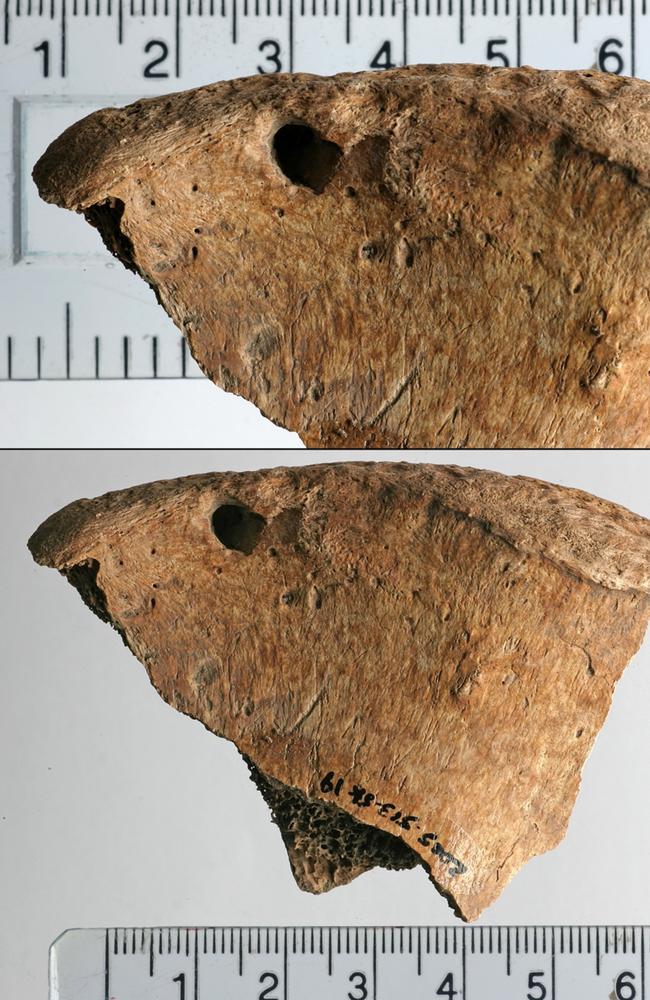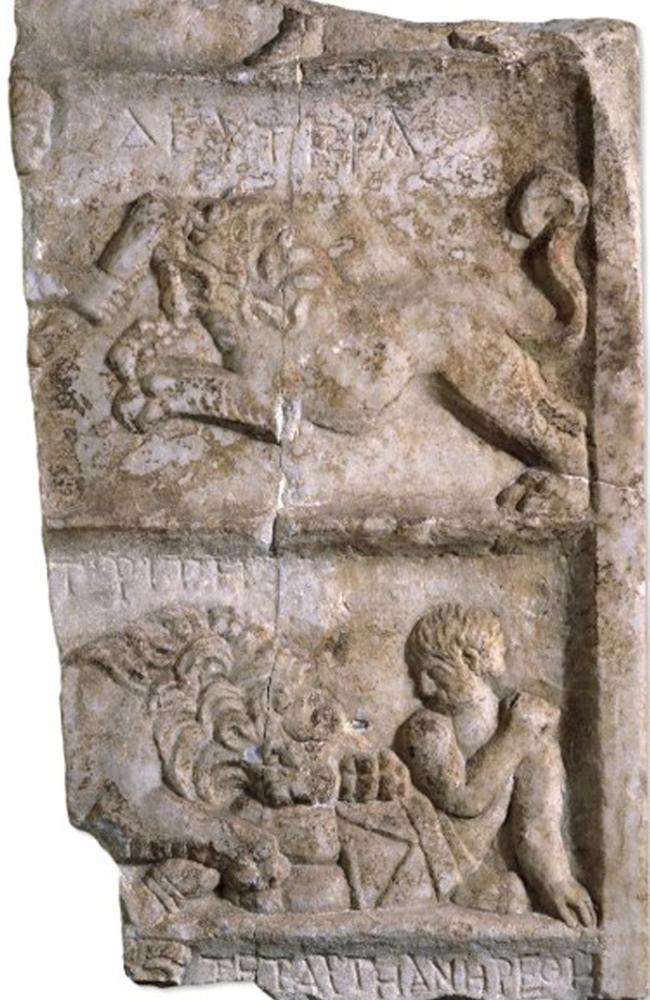Archaeologists discover ‘large cat’ bite marks on Roman gladiator skeleton for first time
A stunning discovery on an ancient Roman skeleton of a man who suffered a brutal death has finally confirmed this popular Hollywood trope.
Bite marks discovered on an ancient Roman skeleton in the UK have been hailed as the first ever physical evidence of gladiators fighting large cats like lions and tigers in public games.
The skeleton was one of 82 excavated in a 2004 dig at the Driffield Terrace cemetery in York, one of the only known Roman-era burial grounds thought to have been used for gladiatorial combatants.
A team of researchers from led by Professor Tim Thompson, a forensic expert from Maynooth University in Ireland, investigated “unusual lesions” on the pelvis of one skeleton, a man estimated to have been aged between 26 and 35.

The researchers compared the size and shape of the bite marks using samples from large cats at London Zoo.
They concluded the injuries were consistent with those from a lion — likely not from a direct attack but by “scavenging” shortly after the unfortunate gladiator was decapitated, “either to put him out of his misery at the point of death, or for the sake of conforming to customary practice”.
The findings, published in the Journal of Science and Medical Research PLoS One this week, represent the “first physical evidence for human-animal gladiatorial combat from the Roman period seen anywhere in Europe”.

“The spectacle of Roman gladiatorial combat captures the public imagination and elicits significant scholarly interest,” the authors wrote.
“Skeletal evidence associated with gladiatorial combat is rare, with most evidence deriving from written or visual sources.”
The individual in question, dubbed 6DT19, was one of three adults found buried in the same box and overlaid with horse bones.
Malin Holst, a senior lecturer in Osteoarchaeology at the University of York, told the BBC the man’s remains revealed the story of a “short and somewhat brutal life”.
David Jennings, chief executive of York Archaeology, told the broadcaster, “We may never know what brought this man to the arena where we believe he may have been fighting for the entertainment of others, but it is remarkable that the first osteoarchaeological evidence for this kind of gladiatorial combat has been found so far from the Colosseum of Rome, which would have been the classical world’s Wembley Stadium of combat.”

York, in northern England, was founded as a Roman legionary outpost in 71AD and later served as the provincial capital from the early third century, with occasional visits from the emperor himself.
Most large Roman cities, particularly those that hosted important dignitaries and wealthy nobles, would feature an arena for staging gladiatorial combat for public entertainment as a display of wealth.
Although the York amphitheatre has not yet been found, the researchers say the bodies exhumed from Driffield Terrace lend credence to the theory that the city would have staged fighting games. Almost all of the remains were men aged 18 to 45, many with significant injuries including fractured teeth, skulls, thumbs and vertebrae — signs “strongly associated with interpersonal violence”.

“Overall, the osteological evidence provides us with a picture of young or middle aged men, originating from across the Roman Empire, engaging in repetitive and sustained acts of violence,” they wrote.
Roman ‘beast hunts’ (venationes), which pitched people against wild animals like lions, tigers, leopards, bears and even elephants, have been extensively documented in texts, mosaics, inscriptions and sculptures — and depicted in films like Gladiator.
“Animals were used, too, as the agents of spectacular mutilation and execution of criminals, captives from warfare and other perceived deviants, including Christians, who were also sometimes forced to participate in such events, known as ‘damnatio ad bestias’,” they wrote.
However, the “nature and scale of person-animal combat in Roman Britain is contested”.
“While images survive of such confrontations, there has been no published evidence to date which provides direct testimony of such events taking place in the province.”
The researchers noted the logistical challenge of transporting lions from North Africa to Roman Britain would have come at significant cost.
“It has been argued that emperors were almost as concerned with the supply of sufficient animals to populate venationes and other spectacles as they were for ensuring the availability of staple foodstuffs, with concomitant investment in infrastructure to sustain that supply,” they wrote.






